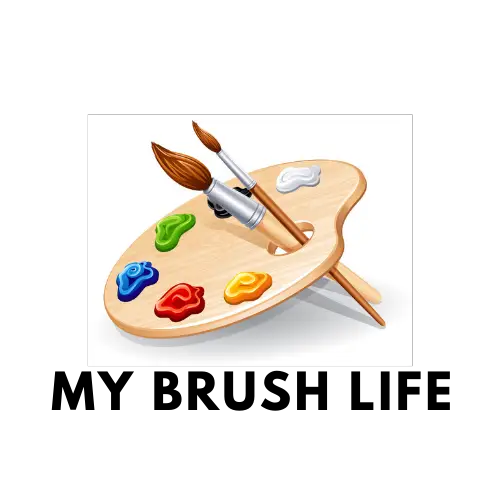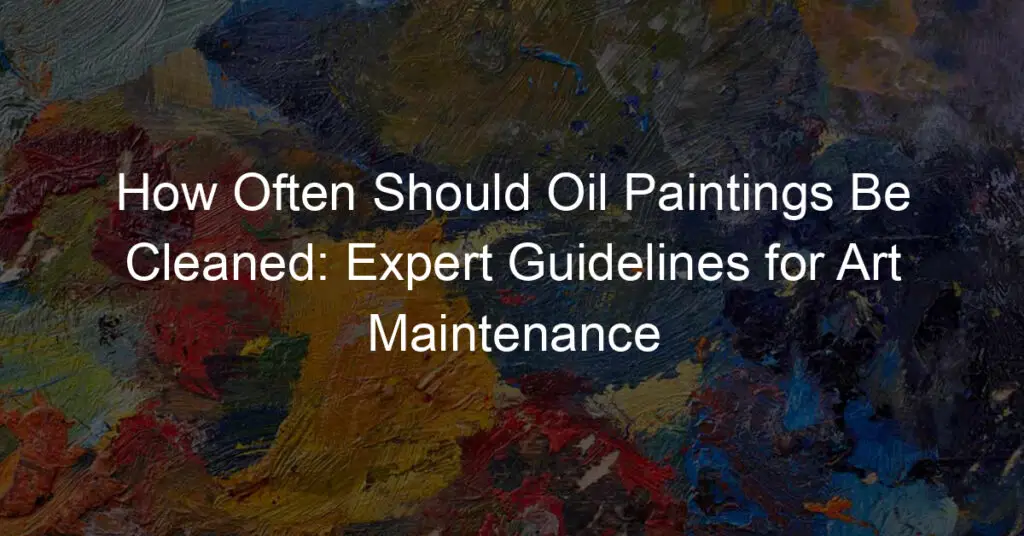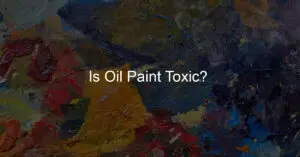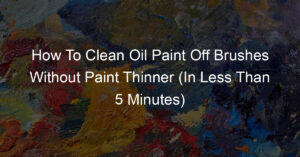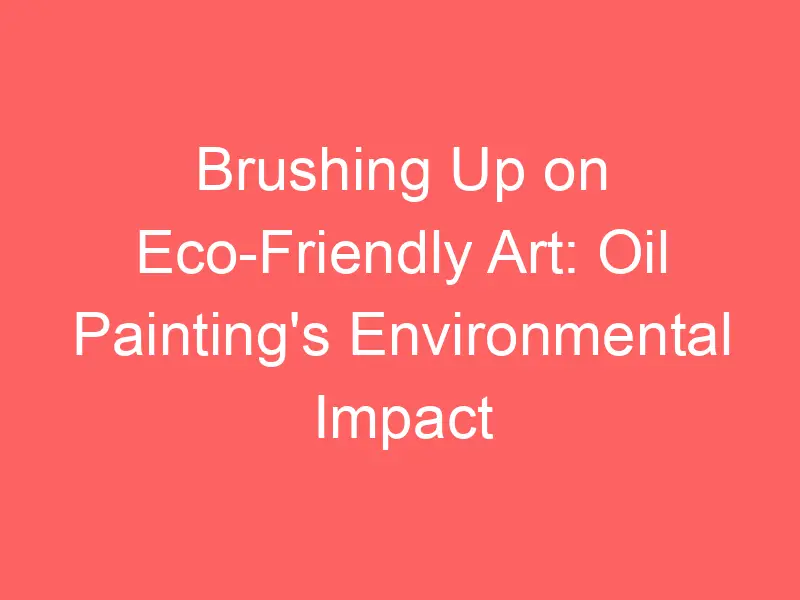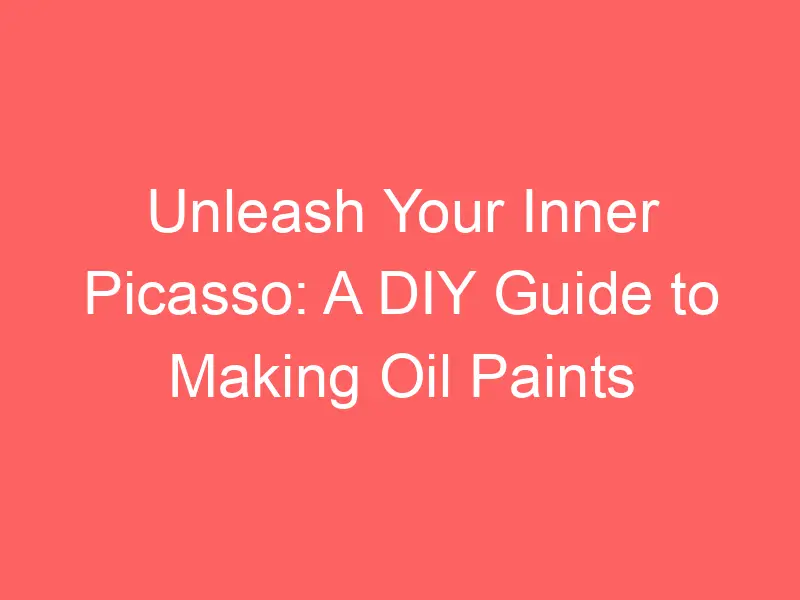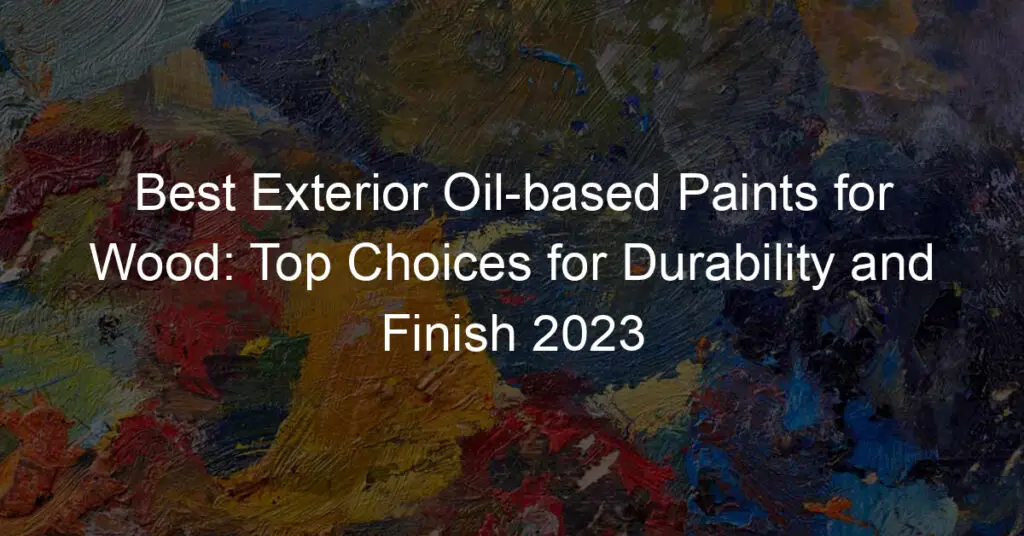Oil paintings are not just beautiful pieces of art; they’re also valuable investments that require proper care and maintenance.
One crucial aspect of nurturing an oil painting is determining when and how often should oil paintings be cleaned.
Though cleaning may seem like a simple task, a lack of understanding of how to do it correctly can lead to irreversible damage to the artwork.
Understanding how oil paintings are constructed can help determine the appropriate cleaning frequency. Different factors, such as the age, materials used, and environmental conditions, play a significant role in how often artwork should be cleaned.
Without correct knowledge of these factors, it can be challenging to assess when to clean and how best to handle an oil painting to preserve its beauty and maintain its value.
Cleaning oil paintings is a delicate process that requires attention to detail and the right tools. But timing is also an essential factor.
Knowing when a painting needs cleaning, as well as opting for professional assistance when it comes to conservation and preventative maintenance, can make all the difference in preserving the paintings’ quality and longevity.
Key Takeaways
- Cleaning frequency for oil paintings depends on factors such as age, materials, and environmental conditions.
- Proper cleaning methods can preserve an oil painting’s value and prevent damage.
- Professional assistance can be invaluable for the conservation and preventative maintenance of oil paintings.
How Often Should Oil Paintings Be Cleaned
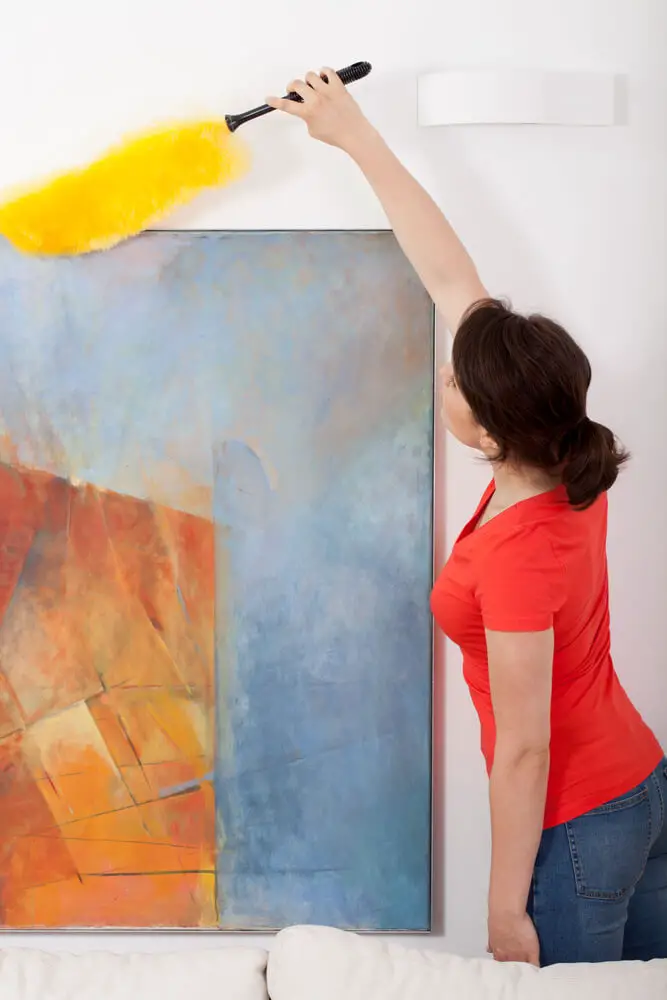
As an artist, I’ve often been asked about the process and care required for oil paintings. In this section, I’d like to give you a brief understanding of oil paintings and why cleaning them is so important.
Oil paintings are created using pigments mixed with drying oils like linseed, walnut, or poppyseed oil. These oils have a natural ability to dry and harden over time, making them ideal for creating lasting works of art.
One of the main advantages of oil painting is its ability to create a natural depth and luminosity through multiple layers of paint, also known as glazing.
During the lifetime of an oil painting, it’s exposed to the natural aging process, which can cause a variety of issues such as yellowing, cracking, and damage from dust and dirt.
This is where the role of a conservator comes into play—an expert in preserving and protecting artwork from the effects of time and environmental factors.
Cleaning oil paintings is a delicate process that should be handled by a trained conservator. This is because cleaning too often or using incorrect methods can damage the artwork and result in irreversible changes.
It is important to regularly inspect oil paintings for signs of aging, dirt, or damage, but determining when a painting requires cleaning should be left to a professional.
In general, oil paintings need to be cleaned every decade or two, depending on their level of exposure to dust, dirt, and other contaminants.
However, this is primarily a guideline, as the specific needs depend on factors such as the materials used, the painting’s age, and the environment it’s displayed.
Being knowledgeable about the nature of oil paintings and why they require cleaning is essential for me, and it should be for those who appreciate and collect them.
By understanding the importance of properly maintaining these works of art, we can help ensure their beauty is preserved for generations to come.
Factors Affecting Oil Paintings
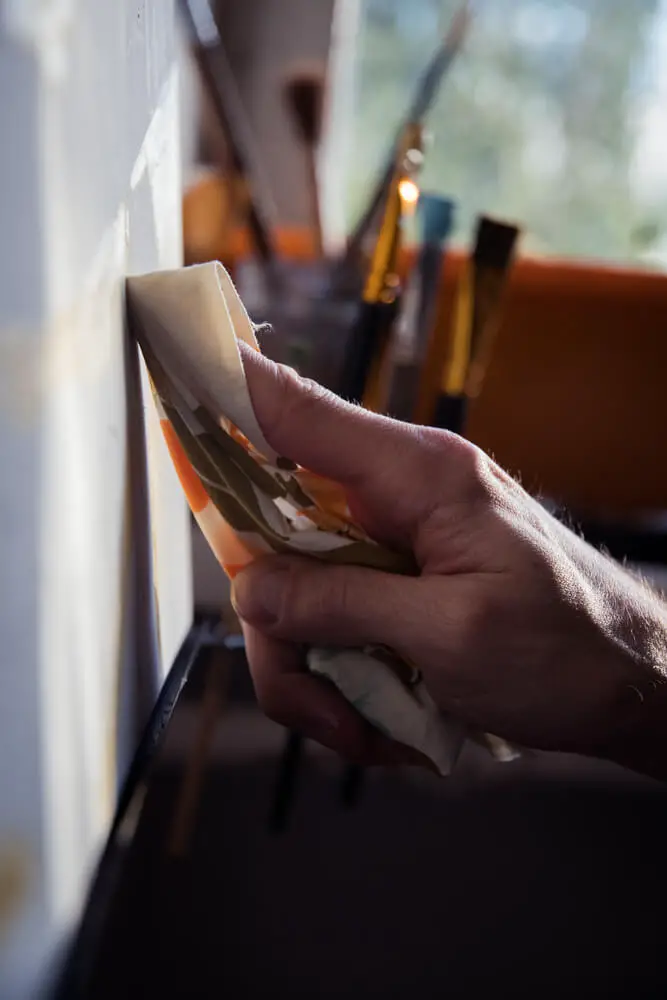
As an art enthusiast, I believe that maintaining oil paintings’ longevity and aesthetic appeal is crucial.
In my experience, several factors can impact the longevity and appearance of these artworks, including dust, sunlight, temperature, humidity, and smoking.
Dust accumulation on the surface of oil paintings can dull their colors and obscure fine details. To keep my artwork looking fresh, I regularly dust it using a soft brush, ensuring not to press too hard on the paint.
In my observation, exposing oil paintings to direct sunlight can substantially fade and degrade colors. I keep my artwork away from windows with direct sunlight or consider installing UV-blocking window films if needed.
Temperature fluctuations can also harm oil paintings. I’ve found that it’s best to maintain a stable temperature in the room where they’re displayed.
Extreme temperature changes can lead to cracking and flaking of the paint. I aim for a temperature range between 65-75°F (18-24°C) for ideal preservation conditions.
Humidity plays a significant role in the preservation of oil paintings as well. In my experience, too much humidity can cause mold and mildew growth, while too little can lead to drying and cracking of the paint.
By maintaining a humidity level between 40-60%, I’ve been able to maintain a balanced environment for my collection.
Lastly, I’ve discovered that smoking can severely damage oil paintings. The chemicals in cigarette smoke (such as nicotine and tar) can discolor and damage the surface of the artwork.
To prevent this, I ensure that smoking is not allowed in the room where my oil paintings are displayed.
In summary, to properly care for and preserve my oil paintings, I am mindful of factors like dust, sunlight, temperature, humidity, and smoking.
Taking measures to mitigate these risks, I can ensure the longevity and beauty of my artwork for years to come.
Specifics of Cleaning Oil Paintings
When it comes to cleaning oil paintings, it’s essential to take a careful and measured approach. As a general rule, I recommend cleaning oil paintings every few years or when they accumulate noticeable layers of grime.
Nevertheless, the process and materials required depend on the painting itself and its condition.
To begin, I gently remove surface dust with a soft brush. Avoiding any pressure is crucial as it can lead to scratches or other damage.
When addressing more stubborn dirt, I turn to a traditional cleaning method known as “cleaning with saliva.”
Using a cotton swab moistened with saliva, I delicately dab at the dirt spots, taking care not to damage the paint layers.
Saliva’s natural enzymes effectively break down most grime without any chemical reactions that could harm the artwork.
In some cases, saliva might not be enough to remove all of the dirt, and a cleaning solution is necessary. One option is using lemon juice mixed with water, which can dissolve grease and dirt.
Yet, it’s important to perform a spot test beforehand to ensure the solution won’t damage the painting. I suggest consulting a professional conservator if unsure of the suitability of a cleaning solution.
In the market, there are specialized oil painting cleaners available, such as Winsor and Newton’s Artists’ Picture Cleaner.
Before using any cleaner, I always read and follow the manufacturer’s guidelines to ensure proper usage.
Be mindful of the drying time required between cleaning stages, as every cleaner differs, and it may take several applications to see results.
Throughout the cleaning process, it’s essential to work in small areas, constantly assessing the progress and adjusting the cleaning method as necessary.
Consistently checking the cotton swab for color transfer is critical, as it will help identify if paint layers are being affected.
If the cleaning process becomes too complex or the painting shows signs of damage, consulting a professional conservator to avoid further damage is critical.
In conclusion, regular maintenance of oil paintings is necessary to preserve their beauty and value. Taking a gentle, meticulous approach, combined with the right cleaning solutions, will ensure the artwork remains in excellent condition for generations to come.
Signs an Oil Painting Needs Cleaning
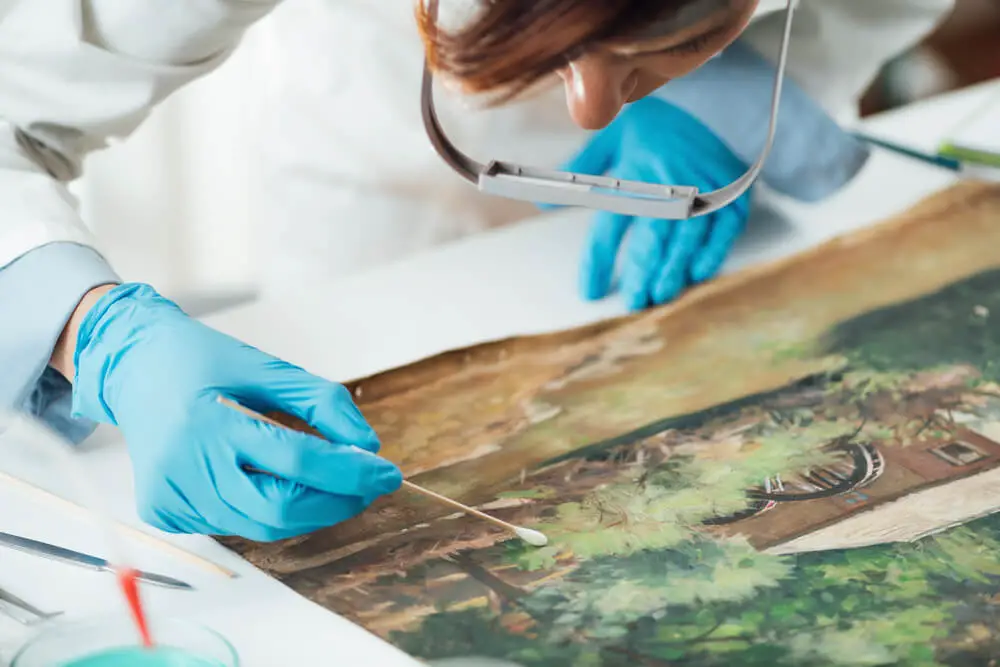
As an art enthusiast, I can identify some crucial signs that indicate an oil painting requires cleaning. One of the most apparent signs is discoloration.
Over time, the colors in a painting can become dull or yellow due to the accumulation of dirt, dust, and other airborne particles. This discoloration often affects the overall aesthetics and vibrancy of the artwork.
Another sign is the presence of dust on the painting’s surface. If I find that dusting the painting with a soft brush or cloth doesn’t effectively remove the dust, it may indicate that the painting needs a more thorough cleaning.
In some cases, dust can become embedded in the paint layers, making it difficult to remove without professional help.
In addition to dust, I look for other particles or foreign materials on the painting. These may include insect droppings, soot from candles or fireplaces, and even fingerprints.
Accumulation of these particles can further contribute to the degradation and discoloration of the artwork.
To summarize, an oil painting may require cleaning when there is noticeable discoloration, dust that cannot be easily removed, or an accumulation of particles on the surface.
A careful and timely cleaning can help preserve the artwork and maintain its original beauty.
Professional Cleaning and Conservation
As an art enthusiast, I understand the importance of preserving the beauty and integrity of oil paintings.
Therefore, I’d like to emphasize the significance of professional cleaning and the role of an art conservator in this process.
When it comes to cleaning paintings, especially oil paintings, it is essential to rely on professional cleaning services. The delicate and intricate nature of these artworks makes it necessary to entrust their care to a professional conservator.
These experts have the knowledge and experience needed to clean and restore paintings while preserving their original state.
As a professional conservator, I have encountered various techniques and methods used in the cleaning process. Each painting is unique, and therefore, the approach to cleaning must be tailored to suit the specific needs of the artwork.
Factors such as the type of paint, the age of the painting, and the presence of any previous restoration efforts influence the cleaning process.
One crucial aspect of professional cleaning involves using a wide range of carefully chosen solvents and cleaning agents. These materials are tested on a small area of the painting first to ensure their compatibility with the artwork.
This ensures that the cleaning process does not cause any damage or alter the original appearance of the painting.
In conclusion, entrusting the cleaning and conservation of an oil painting to a professional art conservator is a wise choice.
As a professional in this field, I can confidently say that we possess the necessary knowledge, techniques, and tools required to maintain the integrity of these cherished artworks, ensuring their preservation for future generations to appreciate.
Preventative Maintenance and Handling
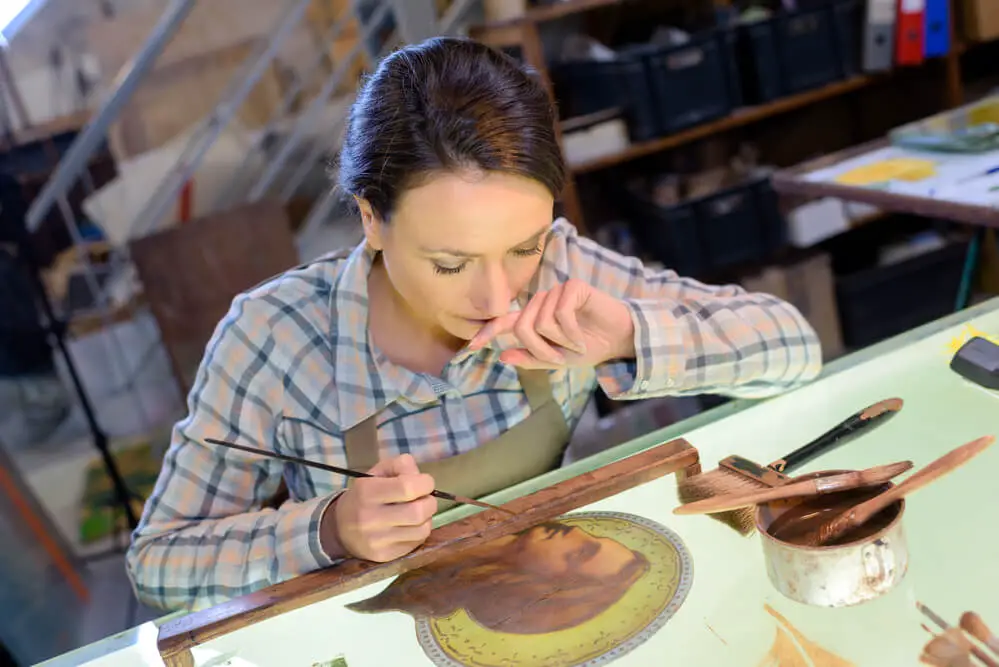
In my experience, proper care and handling of oil paintings play a crucial role in preserving their appearance and longevity.
Preventing damage from occurring in the first place will reduce the need for cleaning or professional restoration.
First of all, it is essential to handle oil paintings with clean hands, preferably while wearing cotton gloves. This prevents the transfer of dirt, oils, and acids from our skin to the surface of the artwork.
Hold the painting by its edges or the frame to ensure minimal contact with the painted surface.
Storage plays a major role in preventative maintenance. Store your paintings in a clean, dry, and stable environment.
The ideal storage conditions are a controlled temperature of about 70°F (21°C) and relative humidity of around 50%. Keep the paintings away from direct sunlight or sources of heat, as well as damp basements or drafty attics.
When displaying the artwork, use proper hanging hardware to ensure the painting’s safety and stability.
Opt for UV-protective glass or acrylic glazing if the painting is framed with glass, as it helps to reduce the risk of damage from ultraviolet rays present in sunlight and artificial lighting.
Another important aspect of preservation is routinely dusting your paintings. Use a soft brush, such as a natural hair bristle paintbrush or a soft sable hair makeup brush, to gently remove dust from the surface.
Be cautious while doing this, and avoid strong strokes or pressure as it might harm the painting’s surface.
Additionally, avoid using household cleaners or chemicals on the painting’s surface. If you notice any flaking, discoloration, or mold growth on the artwork, consult a professional conservator to assess and address the issue.
In conclusion, regularly monitoring your oil paintings and attentively carrying out preventative maintenance is key to keeping them in excellent condition and reducing the need for cleaning.
Follow the listed handling guidelines and storage conditions, and your oil paintings will remain vibrant and well-preserved for years to come.
Storing and Displaying Oil Paintings
In my experience, properly storing and displaying oil paintings are crucial components in maintaining their quality and longevity.
When I store my paintings, I make sure to keep them in a cool, dry, and dark environment, away from direct sunlight.
This helps to prevent the fading of colors and protects the oil paint from environmental damage.
One method I use to protect my paintings during storage is to place them in acid-free storage boxes or cover them with a sheet of acid-free paper or cardboard. This prevents any dust accumulation and potential exposure to moisture.
I also ensure good air circulation around my paintings to avoid the build-up of humidity, which can cause mildew and mold growth.
When it comes to exhibiting my oil paintings, I make sure to choose the right spot in my space. I avoid hanging them near heat sources, such as radiators or fireplaces, as the heat can cause the paint to become brittle and crack over time.
Similarly, I also avoid displaying my paintings in areas with high humidity, like bathrooms or kitchens, as high moisture levels can negatively affect the paint and canvas.
To prevent my paintings from fading, I avoid hanging them in direct sunlight. Even indirect sunlight can potentially damage the oils and pigments over time.
Instead, I opt for soft natural light or artificial light sources like LED bulbs, which produce minimal heat and UV light, thus reducing the risk of damage.
When hanging my oil paintings on the wall, I use sturdy and secure hooks and hangers to ensure their safety.
Keeping a safe distance between paintings also helps to prevent accidental scratches or damage from other items in the space.
Following these guidelines, I am confident that I can properly store and display my oil paintings, preserving their beauty and value for years to come.
Varnishing Oil Paintings
As an artist, I understand the importance of maintaining and preserving my oil paintings. One effective method of doing so is by varnishing.
Varnishing oil paintings not only serves as a protective layer but it can also enhance the appearance of the artwork.
Varnishing can shield the painting from dust, dirt, and other contaminants that may damage the surface over time. I find that varnishing gives my artwork a unified sheen, enriching the colors and bringing out the depth of the composition.
When choosing a varnish, I consider two main types: damar and synthetic. Damar is a natural resin that has been traditionally used for centuries. It dries to a glossy finish but can become brittle and yellow over time.
Synthetic varnishes, on the other hand, are made from acrylic and provide a more flexible and UV-resistant finish. They come in various finishes ranging from matte to gloss.
Before varnishing, I ensure that my painting is completely dry. This can take anywhere from 6 months to a year or more, depending on the thickness of the paint layers.
Proper preparation includes removing any surface dirt and loose particles with a soft brush and, if needed, using a mild soap solution to clean heavier dirt.
I then gently rinse and allow the painting to dry completely before applying the varnish.
When varnishing, I carefully brush the varnish evenly across the surface of the painting, working in thin layers. This ensures a consistent finish and allows for better control of the varnish application.
After the varnish has dried completely, it is normal for it to appear slightly darker than before. This effect will dissipate with time, and the painting’s original colors will shine through once more.
In conclusion, varnishing oil paintings is an essential part of preserving and enhancing their beauty.
Choosing the appropriate varnish and applying it carefully, I can extend the life and vibrancy of my artwork for years to come.
Potential Risks of Cleaning Oil Paintings
I’d like to discuss the potential risks associated with cleaning oil paintings. While it’s essential to maintain these artworks, we must also be aware of the possible dangers during the cleaning process.
By understanding these risks, we can take appropriate measures to prevent any damage.
One of the main concerns when cleaning oil paintings is flaking paint. If not handled with care, cleaning can cause the paint to chip or flake off, ultimately damaging the artwork.
This can occur when using overly aggressive techniques, such as applying too much pressure or using harsh chemicals.
Another issue that may arise during the cleaning process is warping. This occurs when the canvas or frame becomes distorted due to incorrect handling or exposure to moisture.
Warping can lead to uneven surfaces, which can impact the overall appearance and value of the painting.
Cracks in the paint or varnish are also a potential risk when cleaning oil paintings. These cracks can be triggered by the use of harsh cleaning agents, drastic changes in humidity, or applying excessive pressure to the canvas.
Once the cracks have formed, they can be challenging to repair, and further cleaning may exacerbate the issue.
In conclusion, it’s crucial to approach the cleaning of oil paintings with caution and care.
Proper technique, gentle handling, and the use of appropriate cleaning materials are critical to preserving the integrity of these valuable artworks.
Frequently Asked Questions
What is the recommended frequency for cleaning oil paintings?
I recommend cleaning oil paintings every 3 to 5 years, depending on the environment they are in. Oil paintings in dusty or smoky environments should be cleaned more frequently to maintain their beauty and longevity.
What professional methods are used to clean old oil paintings?
Professionals often use specialized solvents and soft brushes to remove surface grime and varnish from old oil paintings. In some cases, they might use a mild detergent solution or apply a new layer of protective varnish.
Is it safe to clean an oil painting at home, and how?
It is vital to use caution when cleaning an oil painting at home. You can lightly dust the painting with a soft brush or lint-free cloth to remove surface dirt. If the painting has visible dirt or debris, it is best to consult a professional conservator for cleaning advice.
Can household items like vinegar or bread be used for cleaning oil paintings?
Using vinegar is not recommended as it may damage the oil paint and the canvas substrate. On the other hand, some artists suggest using a piece of white bread to gently rub the surface. However, this method is not backed by scientific research and should be exercised with caution.
When is it necessary to clean an oil painting?
Cleaning becomes necessary when dirt or surface grime visibly affects the beauty and clarity of the painting. It is also essential to clean a painting if it has been exposed to environmental stressors such as smoke, humidity, or dust.
What precautions should be taken while cleaning oil paintings on canvas?
When cleaning oil paintings on canvas, always be gentle and use a soft brush or cloth to avoid damaging the paint or canvas. Refrain from using abrasive materials or harsh chemicals. If in doubt, consult a professional conservator for expert advice.
